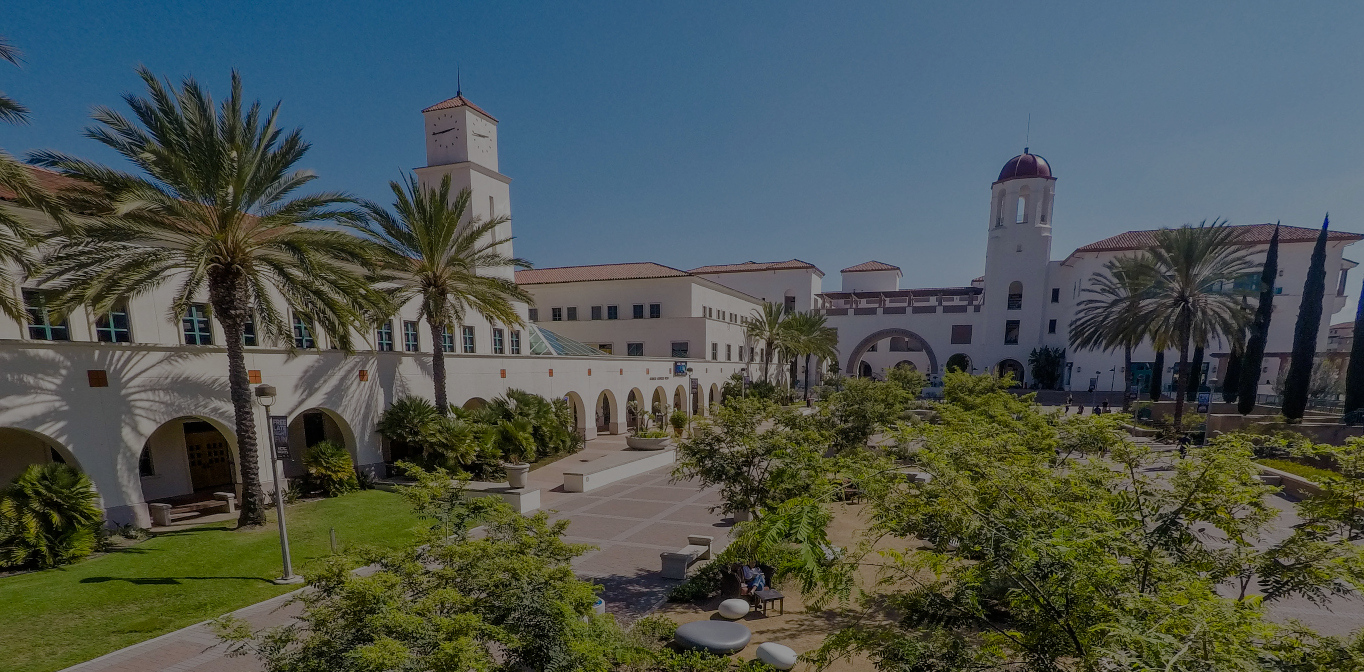Infographic: How Green Is SDSU? It’s Getting Greener by the Year
Since 2019, SDSU has ramped up its sustainability efforts by constructing LEED-certified buildings, growing its educational output, introducing campus-wide composting and much more. See for yourself below.
By Leslie L.J. Reilly and Charlotte Roberts
Over the years, a growing number of students — now nearly 37,000 — converge each year on SDSU for the school year, and almost all first- and second-year students live on campus. That leaves the potential for a lot of waste for the landfill.
Enter the university’s commitment to sustainability. When SDSU’s strategic plan was crafted five years ago, sustainability was a key goal within Resilience. Designed to Thrive, one of five priorities. It’s safe to say that stewardship of this goal and established practices have led to measurable results in environmental impacts on campus.
Here are some examples of that success.
256 Sustainability Majors in 2023
The sustainability major was established in 2012 with six students. The minor started four years later and is one of the fastest growing minors in the College of Arts and Letters with 368 students in 2023.
70 Charging Ports
By 2025, the EV charging network on campus will double in size — from 35 to 70 — and this year, three new EVs were added to the car-share fleet (established in 2010).
15, the Number of LEED Certified Buildings
The Aztec Recreation Center earned LEED Platinum certification, the highest level, in February for merits including its energy efficiency, sustainably sourced building materials and reductions in potable water usage.
“We strongly believe that it is important for students to understand how waste is managed — whether composted, recycled or taken to the landfill — in order to be a part of sustainable progress on campus.” — A.S. Green Love Zero Waste Committee. Its Swap Shop has kept about 8,000 garments out of the landfill.
173,287, Gallons of Gas Reduced
Since 2019, SDSU has composted 1,622 tons of organic waste. The CO2 emissions prevented is the equivalent of 173,287 gallons of gas consumed.
How You Can Be Greener
Replace single-use plastic disposables with paper, bamboo or bagasse alternatives. Bonus if the material is FSC certified.
Compost organics such as plants, fruits, vegetables and meat, when possible. The rule of thumb for composting? If it grows, it goes!
Ride the trolley to SDSU or Snapdragon Stadium next time. The fare is only $5 round-trip and free for people 18 and younger (until June 30, 2024).
For more info, visit the Office of Energy & Sustainability and Green Love: Office of Energy and Sustainability and Green Love Associated Students.

